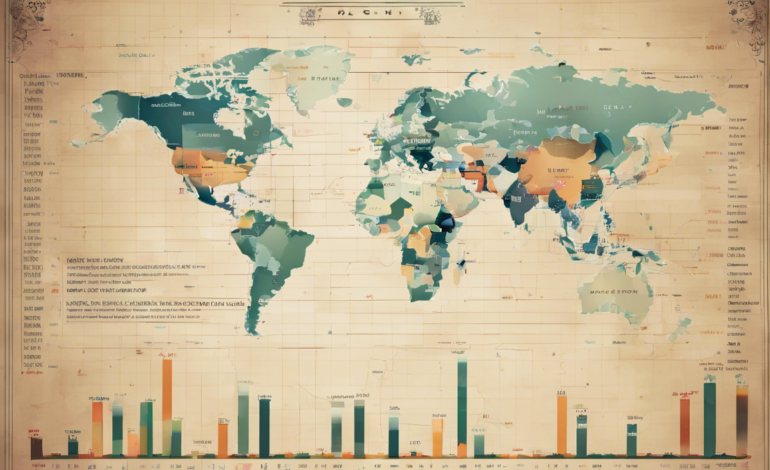
Unlocking the Main Bazar Chart: Your Guide to Stock Market Trends
The Main Bazar Chart is a powerful tool in the world of stock market analysis, providing valuable insights into market trends and helping traders make informed decisions. Understanding how to interpret and unlock the secrets of this chart can give you a significant edge in navigating the complexities of the stock market. In this comprehensive guide, we will delve deep into the world of the Main Bazar Chart, exploring its significance, components, and how you can leverage it to your advantage.
What is the Main Bazar Chart?
The Main Bazar Chart, also known as the Main Market Index, is a graphical representation of the overall performance of a particular stock market. It provides a visual display of the price movements of a basket of stocks that are considered representative of the entire market. By analyzing the Main Bazar Chart, traders can identify trends, patterns, and potential opportunities for investment.
Components of the Main Bazar Chart
-
Price Movements: The most basic component of the Main Bazar Chart is the price movements of the selected stocks over a specific period. This is typically represented by a line graph, with the x-axis showing time and the y-axis showing stock prices.
-
Volume: Another important component is the trading volume, which represents the number of shares traded during a given period. High volumes often indicate increased market activity and can signal significant price movements.
-
Trend Lines: Trend lines are used to identify the direction of the market trend. An upward trend line indicates a bullish market, while a downward trend line signals a bearish market.
-
Support and Resistance Levels: These levels indicate price points where a stock is likely to experience buying support (at the support level) or selling pressure (at the resistance level). Understanding these levels can help traders make informed decisions about entry and exit points.
-
Moving Averages: Moving averages are used to smooth out price fluctuations and identify the underlying trend. The most common types are the simple moving average (SMA) and the exponential moving average (EMA).
Interpreting the Main Bazar Chart
-
Identifying Trends: One of the key benefits of the Main Bazar Chart is its ability to help traders identify trends in the market. By looking at the direction of the trend lines and the slope of moving averages, traders can determine whether the market is bullish, bearish, or ranging.
-
Support and Resistance: Understanding support and resistance levels is crucial for setting stop-loss and take-profit levels. Traders can use these levels to manage risk and optimize their trading strategies.
-
Volume Analysis: Analyzing trading volume can provide valuable insights into market sentiment. High volumes during price increases can confirm the strength of a bullish trend, while low volumes may indicate a lack of conviction among traders.
-
Candlestick Patterns: Combining candlestick patterns with the Main Bazar Chart can help traders predict potential reversals or continuation patterns. Patterns like doji, hammer, and engulfing can signal important market movements.
Using the Main Bazar Chart for Trading Strategies
-
Trend Following: Traders can use the Main Bazar Chart to identify the prevailing trend and place trades in the direction of that trend. This strategy is based on the principle that the trend is more likely to continue than to reverse.
-
Breakout Trading: Breakout traders look for instances where the price breaks above or below a significant support or resistance level. This can signal the beginning of a new trend and provide excellent trading opportunities.
-
Reversal Trading: Contrarian traders use the Main Bazar Chart to identify potential trend reversals. By looking for overbought or oversold conditions and divergences between price and indicators, traders can anticipate changes in market direction.
Common Mistakes to Avoid
-
Ignoring Volume: Many traders focus solely on price movements and ignore trading volume. Volume can provide valuable confirmation of price trends and help traders make more informed decisions.
-
Overlooking Multiple Timeframes: It’s essential to analyze the Main Bazar Chart across different timeframes to get a complete picture of market trends. Ignoring this can lead to missed opportunities or incorrect trading signals.
-
Chasing the Market: FOMO (Fear of Missing Out) can lead traders to enter trades at inopportune times. It’s crucial to wait for confirmation from the Main Bazar Chart before entering a trade to avoid unnecessary losses.
Frequently Asked Questions (FAQs)
- What is the significance of the Main Bazar Chart in stock market analysis?
-
The Main Bazar Chart provides a comprehensive view of market trends and can help traders make informed decisions about buying and selling stocks.
-
How can I use moving averages in conjunction with the Main Bazar Chart?
-
Moving averages can help smooth out price fluctuations and identify key trend directions. Traders often use moving averages to confirm trends and identify potential entry or exit points.
-
What are some common indicators to use alongside the Main Bazar Chart?
-
Popular indicators include Relative Strength Index (RSI), Moving Average Convergence Divergence (MACD), and Bollinger Bands. These indicators can provide additional insights into market trends and potential trading opportunities.
-
How often should I check the Main Bazar Chart for trading decisions?
-
The frequency of checking the Main Bazar Chart depends on your trading style and timeframe. Intraday traders may check the chart multiple times a day, while swing traders may review it once a day or a few times a week.
-
Can the Main Bazar Chart predict future market movements accurately?
- While the Main Bazar Chart can provide valuable insights into market trends, it cannot predict future movements with certainty. It is essential to combine chart analysis with risk management strategies to trade effectively.
In conclusion, the Main Bazar Chart is a powerful tool for stock market analysis, offering valuable insights into market trends and potential trading opportunities. By understanding its components, interpreting the data effectively, and using it to inform your trading strategies, you can navigate the stock market with greater confidence and success. Remember to always conduct thorough research and practice risk management to mitigate potential losses and maximize profits.

